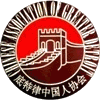
Chinese community is a broad term that refers to individuals who are citizens of the PeopleaEUR(tm)s Republic of China or the Republic of China (commonly known as Taiwan). It also includes those who identify themselves as having Chinese ancestry.
In Portland, the Chinese community is spread throughout the city. Flushing has the largest Chinatown, which is made up of many different regional Chinese groups mainly speaking Mandarin.
History
During the gold rush in the 1800s many Chinese men traveled to the United States to work in the mining and railroad industries. They were not permitted to bring their families. Many of the immigrants settled in ethnic neighborhoods, called Chinatowns, where they could practice their culture and religion and have access to education and healthcare that were unavailable in the homeland.
These communities survived in the face of restrictive labor laws, racial covenants and hostility from the larger American society. They formed churches and civic and family associations, and they worked to care for each other.
Anger and distrust of the Chinese was expressed in acts of violence. Angry white miners lynched Chinese workers in California, and in Rock Springs, Wyoming, in 1885, 28 Chinese were killed and forced back into the mines they had just fled from. The Angell Treaty of 1880 and the Chinese Exclusion Act of 1882 restricted immigration from China.
Culture
In China there are many distinct regional cultural traditions that have endured over time. Many Chinese have traditional family names that distinguish them from other families. Throughout history, different ethnic groups have adapted their location, religion and language as needed.
The culture of the Chinese community is rooted in family, tradition and respect for elders. A strong work ethic is valued and a great emphasis is placed on education and the ability to communicate. Chinese people are avid sports fans and are known for their love of food and cooking. They are also known for their qigong, which is practice of spiritual, physical and medical techniques.
In Melbourne, the Chinese community is found in the eastern and south-eastern suburbs with the City of Monash having one of the largest Chinese communities. They are a well-established and steadily growing group, with medium levels of English language proficiency and some who may require in-language information, resources or in-person support.
Education
Chinatowns in major cities have schools and libraries devoted to Chinese language and culture. In addition, many community organizations have been established to promote Chinese American culture and values.
The family is the center of Chinese life, with filial piety and loyalty to one’s parents emphasized. Education is of utmost importance, and most children spend much of their time in school. Teenagers are not allowed to date, and they socialize with their friends in groups, often organized by a single middle or high school class.
A great number of Chinese have moved from rural areas to large urban centers, and this has created a new type of community that is highly interconnected. Despite the pressure to assimilate, Chinese immigrants have developed strategies to preserve their cultural heritage, such as establishing community-based organizations, Chinese schools and cultural festivals. They are characterized by their strong work ethic and desire to succeed in their new countries. They also have a great sense of responsibility and are known for their guanxi.
Employment
Chinese Americans are active in all sectors of the economy. Many own businesses of their own, but the community also includes professionals and academics. The largest concentration of Chinese people in the United States is in San Francisco, California, followed by Los Angeles and New York City.
In the past, Chinese immigrants formed self-sufficient communities known as Chinatowns in urban areas. These served as a second home for Chinese people and were places where they could shop for familiar foods, go to temples, and catch up on news from the homeland. They were also often organized into clan associations, based on the county of origin in China.
Overseas Chinese have a strong work ethic and are committed to family values. These qualities have made them successful in Latin America, where they contribute to the economic and social sectors of their new countries. Their numbers are significant in most Latin American countries, with the highest concentrations in Peru, Venezuela and Brazil.
